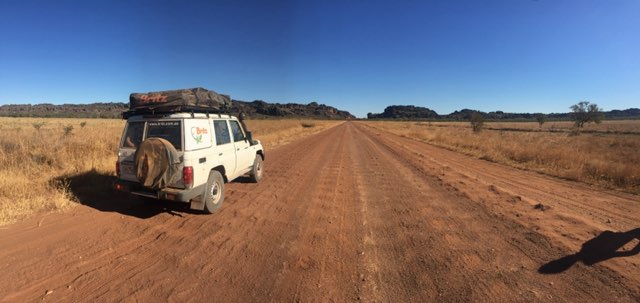Key points
- Understanding patterns of antimicrobial resistance (AMR) in different places is important for choosing the right antibiotic to treat an infection.
- We have developed a program called HOTspots for surveillance of antibiotic resistance across Australia.
- Our program helps health professionals prescribe appropriate antibiotics to people living in rural and remote areas.
When you take an antibiotic, you are taking an agent that can kill or slow the growth of microorganisms. This has been a boon to modern medicine, helping us treat infections that were once life-threatening.
Unfortunately, organisms are becoming increasingly resistant to many treatments, including antibiotics. This is called antimicrobial resistance (AMR).
Due to the rise in AMR, picking the right drug for the right bug at the right time is now harder than ever. It's why doctors often send a sample from the patient to a pathology lab. This can help determine which antimicrobial agents are effective.
However, testing can take days. Wait times can be even longer in rural and remote regions of Australia. What if you need treatment right away?
AMR patterns in regional Australia
Sometimes health professionals have no choice but to prescribe antibiotics based on the evidence available to them. But in some areas of Australia, particularly rural and remote regions, there is little data on patterns of antimicrobial resistance.
This means the chosen antibiotic may not be effective against the bacteria causing the infection. In addition, inappropriate prescribing of antimicrobial agents also drives further antimicrobial resistance.
How can health professionals in regional Australia make confident and responsible decisions at the point of care?

Top tech for the Top End
Dr Teresa Wozniak, leader of our Digital Solutions for AMR (DS4AMR) team, is passionate about addressing health and healthcare inequity in Australia.
“We know that antimicrobial resistance is a problem in our country, but the problem is hidden. This is because national surveillance activities don't include the most vulnerable populations,” Teresa says.
The burden of AMR is highest in regional and remote areas of Australia due to factors such as remoteness, low healthcare resources and high staff turnover. The lack of data on antimicrobial resistance patterns in these areas is exacerbating the problem.
That’s why Teresa and her team founded HOTspots, an antimicrobial resistance surveillance, mitigation and education program. The program collects AMR data from hundreds of healthcare settings around northern Australia. Most of the data comes from more densely populated regions.
Amy Legg is a pharmacist at the Royal Brisbane and Women’s Hospital. She says HOTspots uses this information to gain insight into areas where data is scarce.
“It takes the AMR data that we have been collecting in major areas like Darwin and Alice Springs and makes it relate to some of the more remote areas,” Amy says.
The result is region-specific data on antimicrobial resistance patterns.
Improving remote medical care
Amy is excited about how the technology can be used at the point of care to improve patient outcomes.
“We can optimise care for our patients because we'll have access to data that’s specific for where they live, even if it’s a remote location.”
Anne Klenitz is a Senior Rural Medical Practitioner in Remote Health. She says that the value of this cannot be understated.
“As doctors, we look after a population that covers a large geographical area. In all those areas, the antimicrobial resistance varies,” Anne says.
“Having a platform that can give us data specific to each region is really useful.”
The data is displayed via an interactive digital platform. Clinicians, researchers, and policymakers can readily access the accurate and up-to-date information.
It takes a village (to treat antimicrobial resistance)
Teresa and her team work closely with health professionals in the affected areas.
Over 200 primary health clinics and hospitals currently provide data to HOTspots.
“The need for the program really came from the ground. It came from building very strong relationships and partnerships with local clinicians and policymakers,” Teresa says.
“The key to moving forward is maintaining existing partnerships and bringing new collaborators on board.”
This goes hand-in-hand with the education component of the HOTspots program.
Health professionals can complete CCP-accredited training on antimicrobial resistance as part of their professional development.
The HOTspots program is also involved with the Australian Antimicrobial Academy. Health workers or health professionals working in the Aboriginal and Torres Strait Islander health sector can gain skills related to antibiotic use, auditing, stewardship, surveillance and resistance.
Using data to defeat AMR
It’s all part of using antimicrobial resistance data for action.
Amy is excited about the potential of HOTspots to encourage the effective use of AMR information.
“It’s already mandated that we report on antimicrobial resistance patterns. But a lot of that data hasn't been optimally used in terms of guideline writing,” Amy says.
“Now we'll have really robust data to drive action.”
Branwen Morgan, leader of CSIRO’s Minimising Antimicrobial Resistance mission, says that access to this data is an important aspect of responding to AMR holistically and effectively.
“Unless we have an enabling ecosystem with appropriate funding and appropriate policy, some of the solutions we come up with to combat AMR will never have the impact that we want them to have,” Branwen says.
Addressing health and healthcare care inequities between urban, rural, and remote regions is critical in ensuring that all Australians are protected. Teresa and her team are working on expanding the geographical reach of the HOTspots program.
“We want to go beyond northern Australia. We think that the HOTspots app can be used as a national atlas for antimicrobial resistance,” she says.
